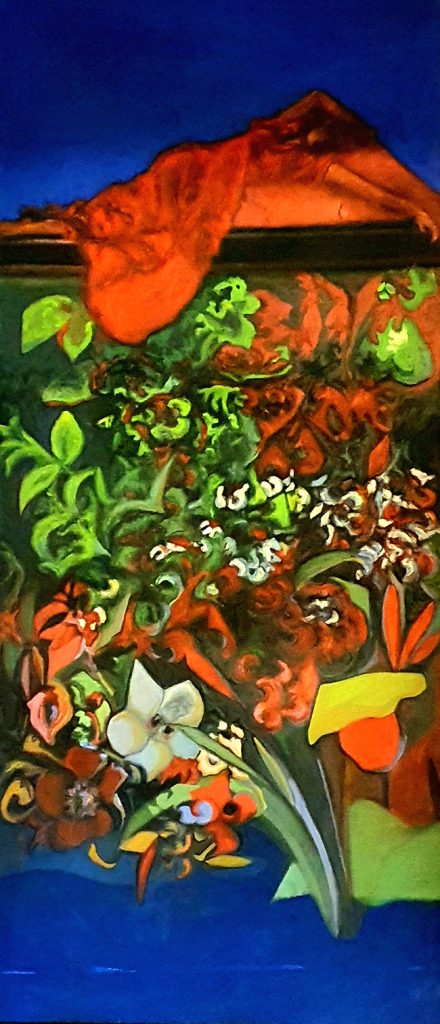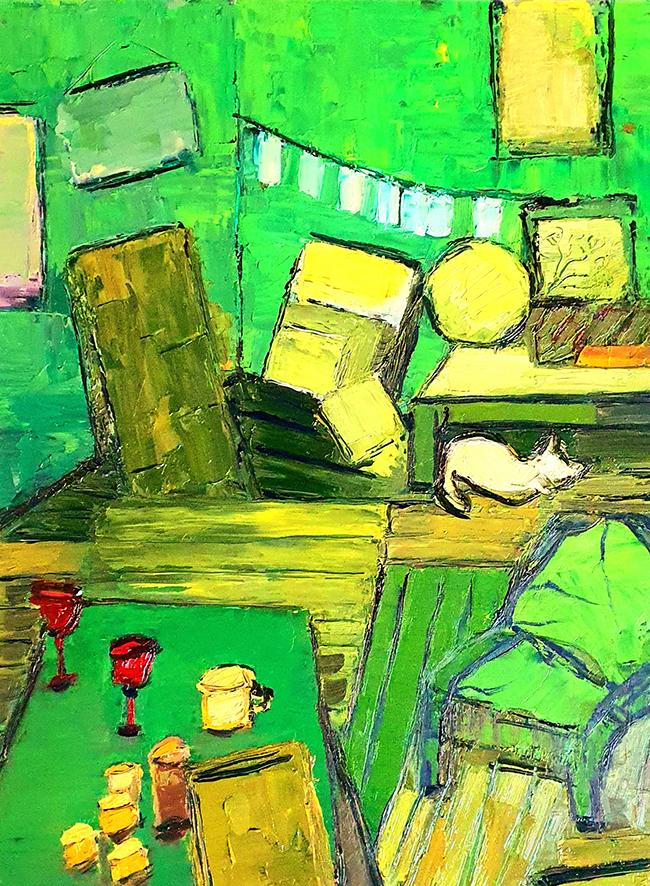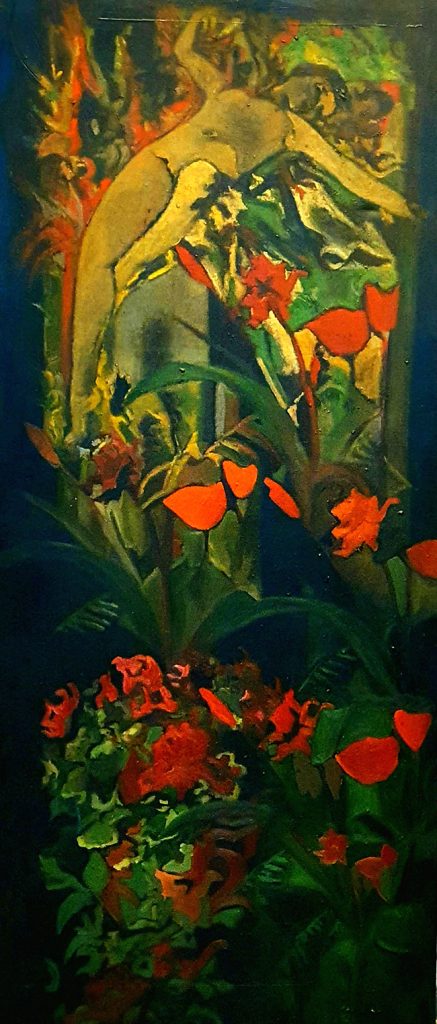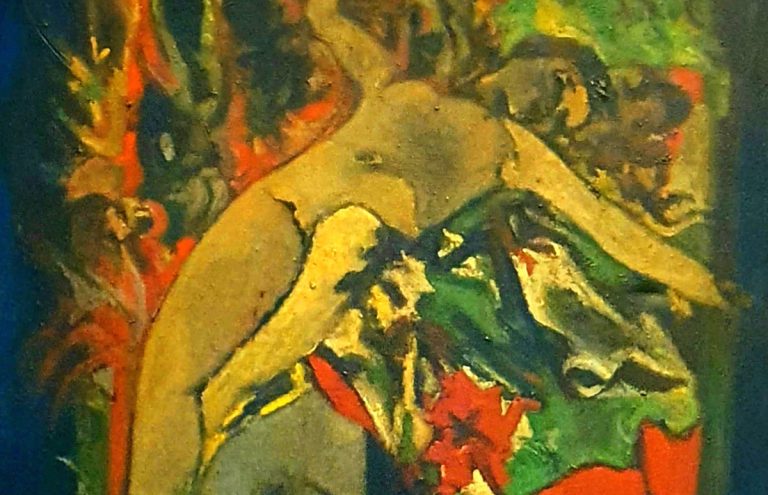Katerina Tsitsela’s work doesn’t try to explain the world—it explores how we feel our way through it. Based in Greece, she moves between painting and engraving, focused not on external likenesses, but internal states. “I explore human perception of landscapes,” she says, “as a way to express mental situations.” What emerges are not traditional views of nature or figures, but what she calls “internal landscapes”—emotional topographies where body, color, and memory intertwine. Her work is often read through a psychoanalytic lens, but the experience of it is far more direct: you feel it before you try to make sense of it.

There’s a tension running through her practice—between beauty and weight, presence and absence, the seen and the felt. That’s where her art lives. She doesn’t paint to decorate. She paints to reach into something wordless and often uncomfortable, pulling it to the surface one brushstroke at a time.
One of Tsitsela’s recent oil paintings from 2024 features a nude female figure surrounded by an overwhelming burst of flowers. There’s no title. There doesn’t need to be. The work isn’t telling a story. It’s showing a condition—one that doesn’t translate easily into language. Painted in an energetic Expressionist style, the figure doesn’t appear as a subject in a floral setting but seems to emerge from it. The woman and the flowers share the same brushstrokes, the same chaos, the same urgency. Her body isn’t separate from nature; it is nature—vulnerable, exposed, alive.
There’s nothing dainty about the flowers here. They push against the figure, almost overwhelming her, yet never quite swallowing her up. This creates a charged space where sensuality meets wildness, where vulnerability isn’t weakness but a fact of being human. The rawness of the paint, the intensity of color, and the lack of narrative combine to create an emotional immediacy. You’re not just looking at the painting—you’re feeling your way through it.
Another painting from the same year offers a quieter scene, but it doesn’t let go of its emotional grip. Again, the figure is nude and alone. No floral chaos this time—just her. She stands without context, suspended in color and brushstroke. Her posture is soft but weighted. There’s sorrow here, but not drama. She doesn’t weep. She just is.

This kind of stillness might be easy to miss in a noisy art world, but Tsitsela doesn’t need spectacle to make an impact. The power of this piece lies in how little it tries to distract. There’s no setting, no story, no costume. Just the figure and the feeling she holds. The Expressionist approach—loose, textured, emotional—pulls us into the quiet ache of solitude. It doesn’t scream. It doesn’t explain. It just shows what it means to carry something heavy inside and have no place to set it down.
Tsitsela’s third piece from 2024 steps away from the figure and into a space that’s just as personal: her studio. It’s painted in oils on paper, and though it may seem like a simple room, it unfolds like a psychological space. Green dominates the painting—not a calm green, but a pulsing, layered one. It doesn’t feel like decoration. It feels like memory.

The brushwork gives the room shape, but not clarity. This isn’t an architectural study. It’s a place you remember rather than one you see. There’s a sense of presence here, but not necessarily comfort. It’s more reflective, more introspective. This studio isn’t a retreat. It’s where the thinking happens, where the feeling builds. Tsitsela turns this familiar space into a kind of mirror—one that doesn’t show you your face but your interior atmosphere.
What links all three works is this refusal to flatten emotion. Tsitsela paints in a way that resists resolution. Her images don’t solve anything. They hold space for things we often push aside—solitude, sorrow, desire, uncertainty. And in doing so, they invite us to sit with those things, not as problems, but as facts of being alive.
She doesn’t label her work. Most of her recent paintings remain untitled, which feels appropriate. Naming would anchor them too much. What she’s offering is less about statement and more about encounter. The viewer doesn’t decode her art; they step into it.
Katerina Tsitsela isn’t chasing a finished image. She’s searching for something more elusive—a shape for feeling, a color for thought, a way to show what usually stays hidden. Her work doesn’t offer answers, but it makes space for the questions that matter. And that’s more than enough.

